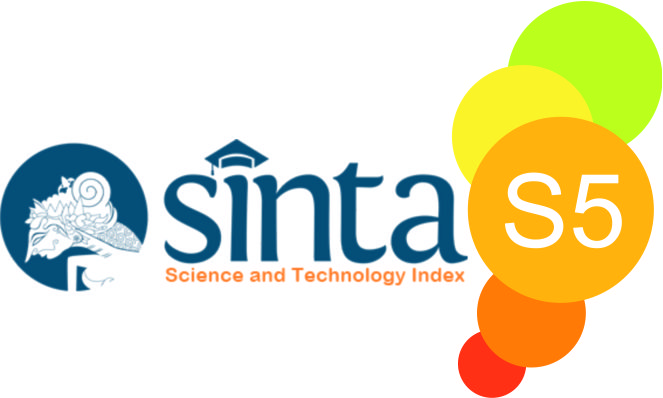Analisis Preferensi Wisatawan dalam Pemilihan Produk Wisata untuk Perencanaan Agrowisata Piat Mangunan-Girirejo Universitas Gadjah Mada
DOI:
https://doi.org/10.23887/jmpp.v5i3.43384Keywords:
Agrotourism, Tourist Preferences, Tourism Products, Cross TabulationAbstract
The Mangunan-Girirejo UGM Agro Technology Innovation Center (PIAT Magir UGM) has its own natural and cultural attractions that have the potential to become an education-based agro-tourism, as well as one of the agro-tourism with an icon in the form of 3S fruit plants (sapodilla, soursop, srikaya). The purpose of this research is to examine tourist preferences for potential tourism products in order to plan agro-tourism at PIAT Magir UGM. The quantitative descriptive method was used, along with cross-tabulation analysis and the Chi-Square Test. To determine the type of respondents, 123 visitors to the Mangunan tourist area and tourists who had visited agro-tourism were chosen using the accidental purposive sampling technique. The study's findings show that: (1) PIAT Magir UGM has a variety of potential tourism products that can be developed for agro-tourism planning; (2) Tourists who travel to agro-tourism are mostly tourists in the age group of 26-33 years (63.4%), which age group is categorised as the millennial generation; (3) Tourist preferences for tourism product components that have a significant relationship are tourists in the age group 26-33 with tourist attractions in the form of festivals/events, accessibility in the form of riding a bicycle to go around agro-tourism, and amenities in the form of camping accommodation and welcome gate designs in the form of fruit statues of agro-tourism icons.
References
Alves, S. 2017. Influence of social media photos in destination travel. Dissertation. Les Roches Global Hospitality Education. Spanyol.
CNN Indonesia. 2017. Daerah Istimewa Yogyakarta selalu menjadi daerah tujuan wisata favorit. Dalam http://2017/daerah-istimewa-yogyakarta-menjadi-daerah- tujuan-wisata-favorit/. (diakses Juli 2018)
Damanik, J., Weber, H. (2006). Perencanaan ekowisata: Dari teori ke aplikasi. Yogyakarta:Andi.
Detik.Travel. 2017. Delapan tempat di Yogyakarta yang menjadi populer dan favorit bagi wisatawan. Dalam https://Kamis/18/1/2017//8-tempat-di-yogyakarta-yang- menjadi-populer/. (diakses tanggal)
Fandeli, C. 2002. Perencanaan kepariwisataan alam. Yogyakarta: UGM
Gantini, Kariza Devia dan Setiyorini, Diyah HP. 2012. Pengaruh revitalisasi produk wisata terhadap preferensi mengunjungi Lembah Bougenville Resort (Survei pada Lembah Bougenville Resor Kecamatan Lembang Kabupaten Bandung Barat). The Journal, Vol. 2, No. 2.
Getz, D. 2004. Event management and event tourism. Canada: University of Calgary.
Harian Jogja. 2020. Jajal pengalaman berwisata dengan sepeda. Dalam https://m.harian.jogja.com/jajal-pengalaman-berwisata-dengan-sepeda . (Diakses tanggal 13 Januari 2021)
Lobo, R. & Goldman, George & Jolly, Desmond & Wallace, B. & Schrader, Wayne & Parker, Scott. (1999). Agritourism benefits agriculture in San Diego County. California Agriculture. 53. 20-24. 10.3733/ca.v053n06p20
Perda Kabupaten Bantul No. 4 tahun 2011 tentang RTRW Kabupaten Bantul Tahun 2010 – 2030.
Porteus, J. D. (1997). Environment and behavior. Planning and everyday urban life. Boston: Addison-Wesley.
RIPPDA Provinsi Daerah Istimewa Yogyakarta tahun 2012 – 20125.
Rilla, E. 1999. Bring the city & country together. California Coast and Ocean. Vol. 15, No. 2. 10p
Rukmiyanti, N. M. S., dan Suastini, N. 2016. Dampak media sosial terhadap perilaku wisatawan. Jurnal Procceding of Conference on Management adn Behavioral Studies Universitas Tarumanegara, Jakarta, 26 Oktober 2017.
World Economic Forum. 2019. The travel & tourism competitiveness report 2019. Tersedia di http://reports.weforum.org/tccr. (Diakses tanggal 12 Januari 2020).
Zikovic, R, Brdar, I., & Gajic, J. 2014. The impact of social media on tourism. Conference Paper of E-Business in Tourism and Hospitality Industry.










